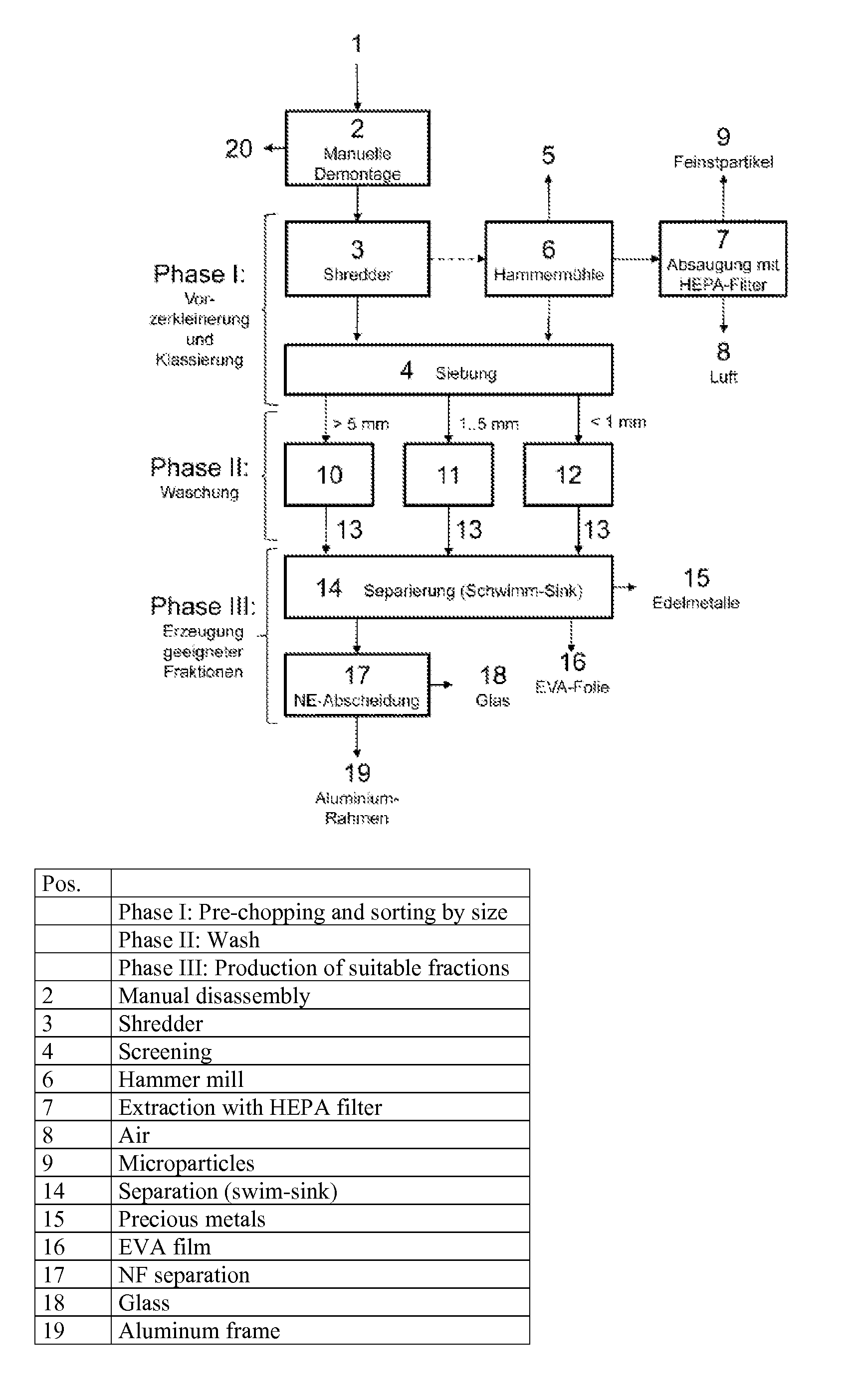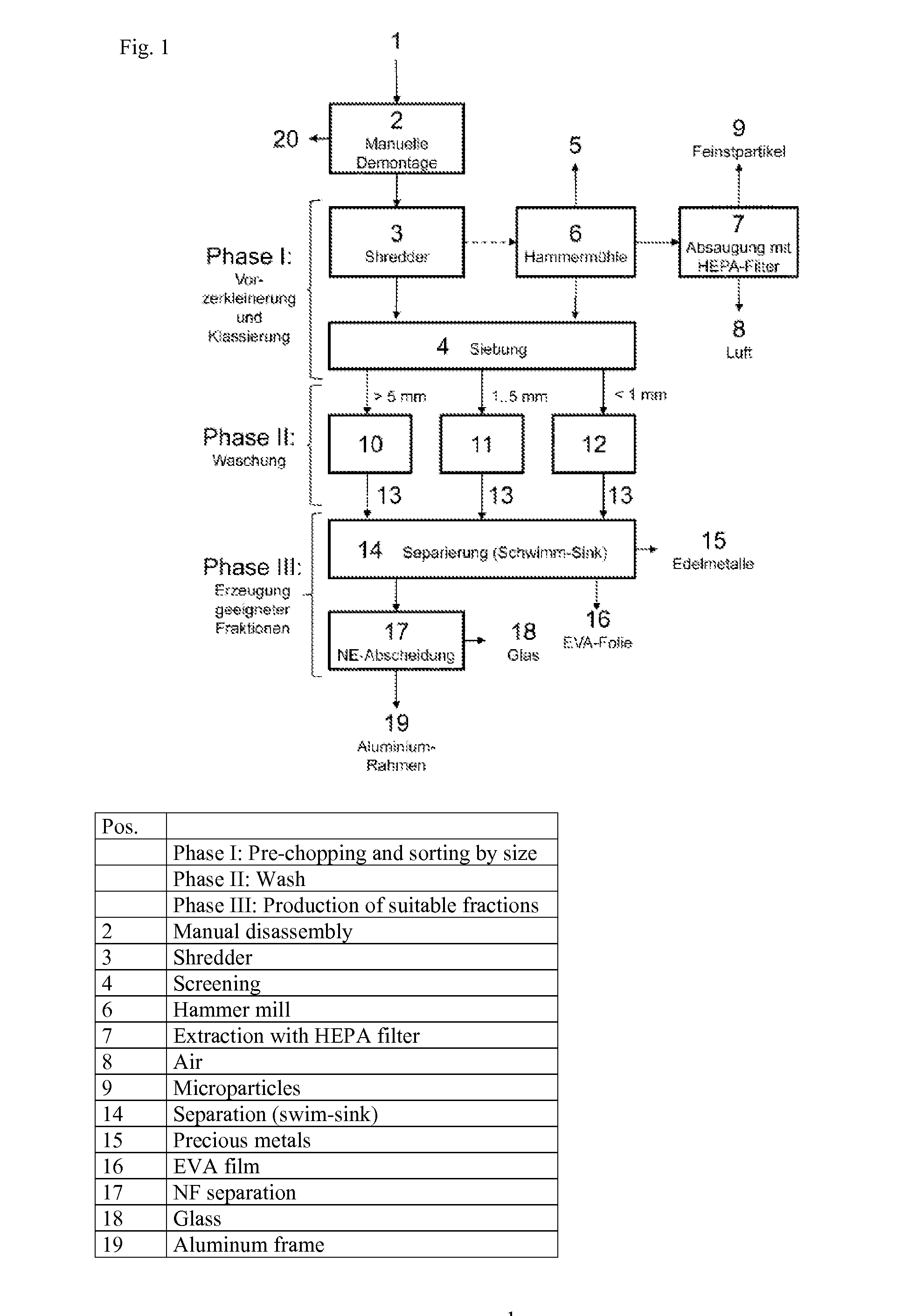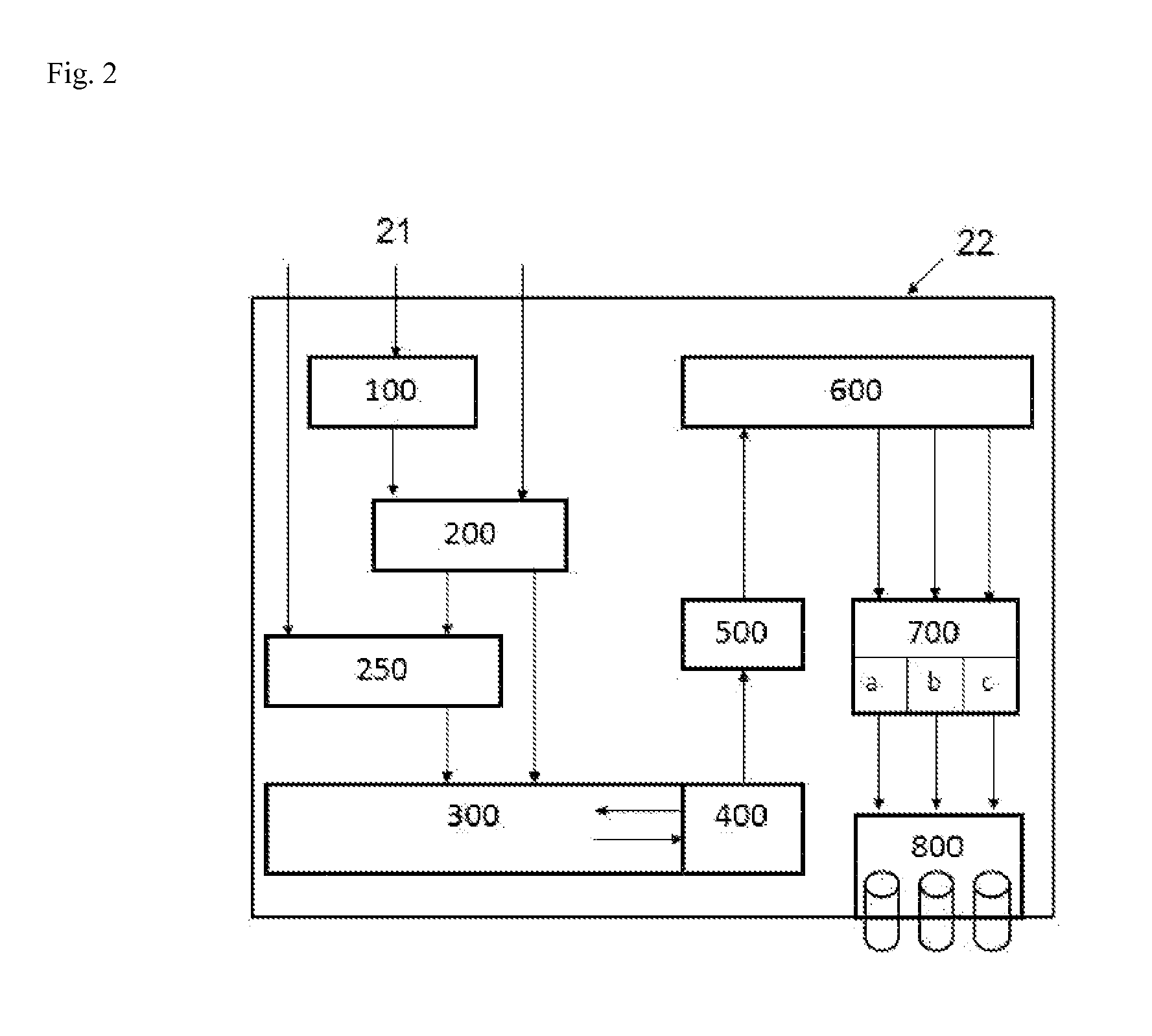Separating Fluid, Method And System For Separating Multilayer Systems
- Summary
- Abstract
- Description
- Claims
- Application Information
AI Technical Summary
Benefits of technology
Problems solved by technology
Method used
Image
Examples
example 1
[0078]
Contribution to% bythe aqueousComponentweightSubstancecomponentAnionic17.8Leuna alkane sulfonate 3011.8surfactant(sodium alkane sulfonatemixture with an averagechain length C15 (C12-C18) based on n-paraffin -34% watery solutionNon-ionic5.9Polyethylene glycol-surfactantmono-n-dodecyl / tridecyl / tetradecyl / -pentadecylether assubstance mixture ofcompositions with 4 to 25ethylenoxide unitsHydrotrope3.5Cublen R 60 [N-(2-1.4hydroxyethyl)-N,N-bis-methylenephosphonic acidin the form of a 60%watery solutionCo-surfactant8.9Butanol-2Organ. Phase7.0Xylen (techn.)Addition of water56.90Watery70.1Total of addition of watercomponent totaland contributions to thewatery component
example 2
[0079]
Contribution to% bythe aqueousComponentweightSubstancecomponentAnionic6.0Leuna alkane sulfonatesurfactant95 (sodium alkanesulfonate mixture withan average chain lengthC15 (C12-C18) basedon n-Paraffin)Non-ionic6.0Polyethylene glycol-surfactantmono-n-dodecyl / tetradecylether assubstance mixture with9 ethylenoxide unitsHydrotrope2.0Dimethylaminomethane-bis-phosphonic acidCo-Surfactant9.0EthylhexanolOrganic phase8.0MesitylenAddition of water69.0Aqueous69.0Total of addition ofcomponent totalwater and contributionsto the watery component
[0080]In the nanoscale dispersions according to example 2, NaOH may be added to increase the pH value.
example 3
[0081]
Contribution to% bythe aqueousComponentweightSubstancecomponentAmphoteric5.0N,N-dimethyl-N-surfactanttetradecyl-ammoniopropanesulfonateNon-ionic6.0Polyethylene glycol-surfactantmono-n-dodecyl / tetradecylether assubstance mixture with 9ethylenoxide unitsHydrotrope2.0Dimethylaminomethane-bis-phosphonic acidCo-Surfactant9.0EthylhexanolOrganic phase7.0Hydrosol P 180 EAAddition of water71.0Watery71.0Total of addition of watercomponent totaland contributions to thewatery component
[0082]In example 3, the anionic surfactant is replaced by an amphoteric surfactant in contrast to examples 1 and 2.
PUM
| Property | Measurement | Unit |
|---|---|---|
| Percent by mass | aaaaa | aaaaa |
| Percent by mass | aaaaa | aaaaa |
| Percent by mass | aaaaa | aaaaa |
Abstract
Description
Claims
Application Information
 Login to View More
Login to View More - R&D
- Intellectual Property
- Life Sciences
- Materials
- Tech Scout
- Unparalleled Data Quality
- Higher Quality Content
- 60% Fewer Hallucinations
Browse by: Latest US Patents, China's latest patents, Technical Efficacy Thesaurus, Application Domain, Technology Topic, Popular Technical Reports.
© 2025 PatSnap. All rights reserved.Legal|Privacy policy|Modern Slavery Act Transparency Statement|Sitemap|About US| Contact US: help@patsnap.com



